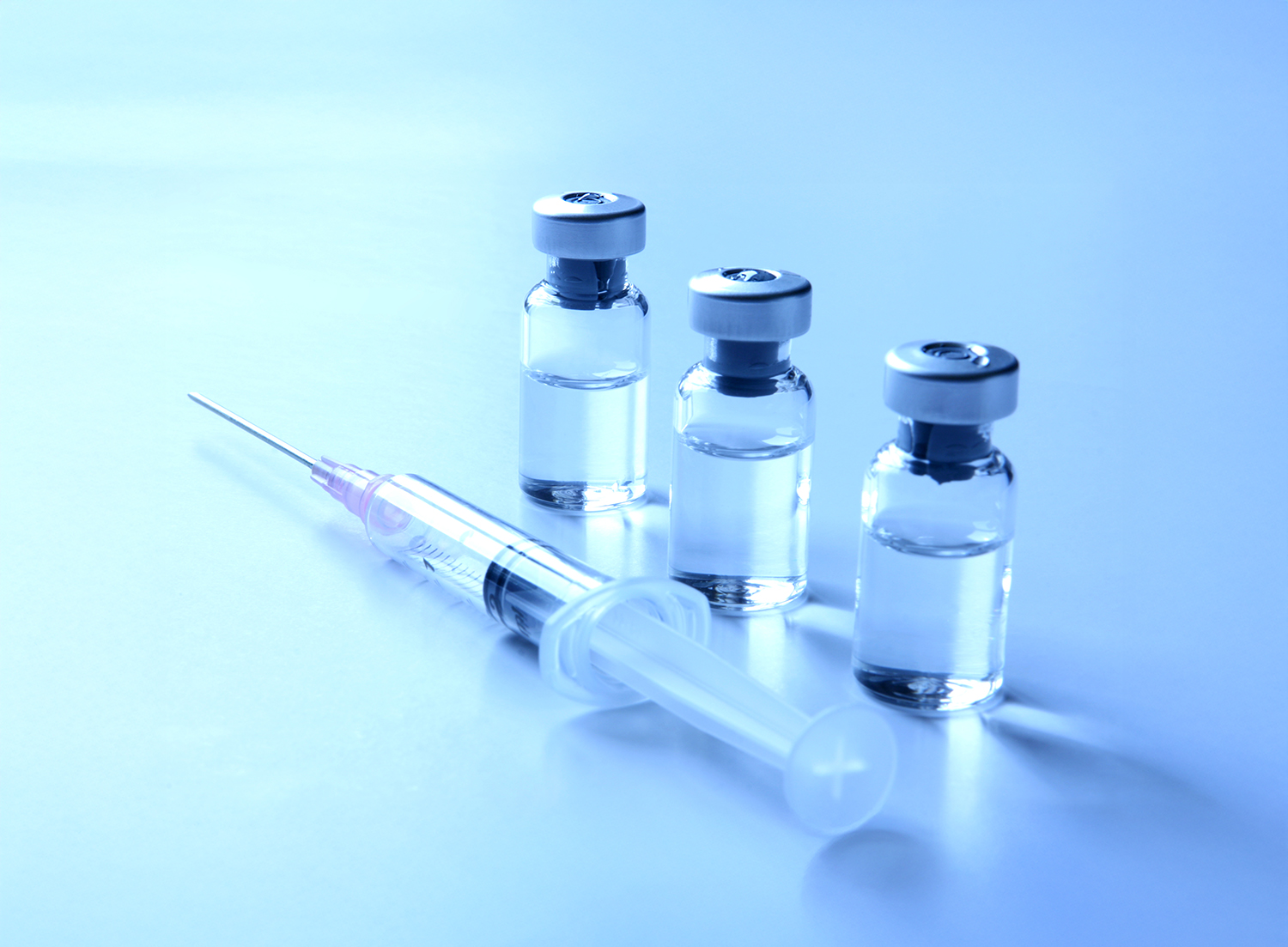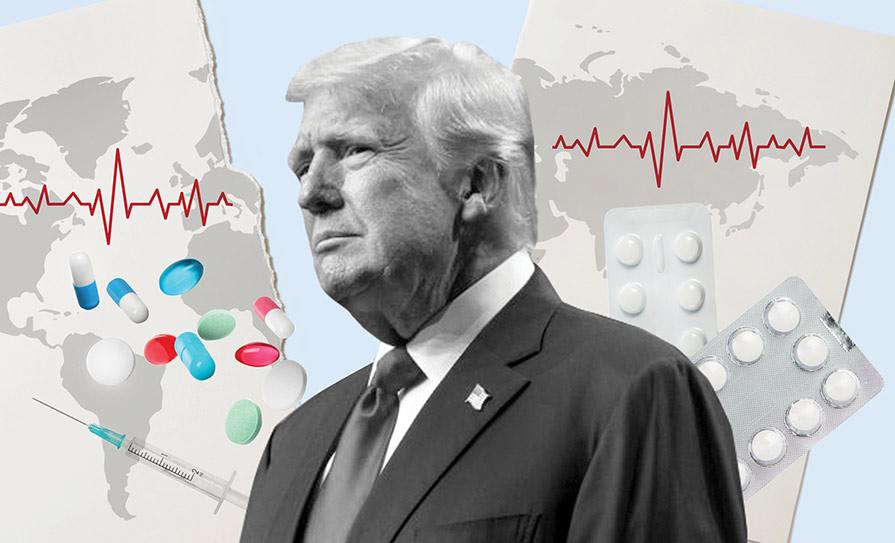The arrival of flu season combined with continuing impact of the Covid pandemic could lead to a winter of unique challenges for the Irish health service. David Lynch reports
Last winter was an unusual one for the Irish health system. This was because of what was present – the Covid-19 pandemic – and what was essentially absent – the seasonal influenza virus.What will happen this winter is uncertain. It remains to be seen what effect the lifting of Covid restrictions, both at home and abroad, will have on the spread of the virus, even with vaccination. And without a national lockdown, seasonal influenza is likely to be more of a factor than it was at the end of 2020. In August 2020 the phrase ‘twindemic’ was used in The New York Times, referring to the potential of a severe winter influenza season alongside Covid-19.
Ultimately, the worst fears did not come to pass because of the low level of influenza. But already the international easing of Covid-19 restrictions has led to concerns about the possibility of such an occurrence at the end of this year and the early months of 2022. In the UK earlier this year, the Academy of Medical Sciences issued a stark warning regarding the potential challenges posed by the combined difficulties of Covid and influenza in the coming months.
According to the British Medical Journal, the warning stated that urgent action was needed to stop a “lethal triple mix” of Covid-19, influenza and respiratory syncytial virus (RSV) “pushing an already depleted NHS to breaking point this winter”. Similar concerns have been raised in this country. In early August, speaking on RTÉ Radio One’s Morning Ireland, IMO President and Specialist in Public Health Medicine Dr Ina Kelly warned of a “challenging winter ahead for acute hospitals and general practitioners”.
“We were spared… an influenza outbreak last winter because the closure of society in a lot of ways protected us from Covid, but also from influenza,” she said. “This winter we’re not going to have that protection, so we’re going to potentially have many respiratory viruses and it will be harder to diagnose whether it’s Covid-19 or what else it is.” HSE preparations for the influenza season are underway, with internal discussions taking place around the possibility that the severity of illness from influenza could be higher this year because people’s “genetic memory” may have reduced. There has also been mention of potentially “piggy-backing” the influenza vaccination system onto the Covid vaccination infrastructure (see panel).
Uncertain picture
“Flu starts of in southeast Asia every year, then goes to places like Australia, New Zealand and it comes to our part of the world in winter,” Consultant in Emergency Medicine at Sligo University Hospital and President of the Irish Association for Emergency Medicine (IAEM), Dr Fergal Hickey, told the Medical Independent (MI) last month.
“So they are typically six months ahead of us. They saw a significant reduction in flu last year, which was as a result of the social distancing, mask wearing, hand washing and so on. Because we had a significant lockdown, we essentially saw no real influenza last year, which was just as well, because we were struggling with Covid.”Looking forward to this winter, the IAEM President warned that an absence of influenza was not now guaranteed. Speaking before the Government announced the further easing of Covid-19 restrictions, Dr Hickey predicted that the loosening of lockdown measures may lead to increased influenza levels.
“Because many of the lockdown measures have been lessened – I’m not saying they shouldn’t be, but I’m just saying some of the things that protected us last winter are not going to protect us this winter.”Dr Hickey said that emergency departments were already experiencing significant crowding with high numbers of patients in August. At the end of last month, the Government announced its aim for the final easing of public health restrictions by 22 October. The plans from late October include the easing or removal of rules on physical distancing and mask wearing in many circumstances. However, masks will still be required on public transport, in healthcare settings and shops. The easing and removal of some of the face covering restrictions has caused unease among some doctors. On 31 August, former Minister for Health and current Minister for Further and Higher Education, Research, Innovation and Science, Simon Harris, tweeted the phrase “progress and hope” in response to the timetable for the easing of Covid restrictions.
In response, Dr Oisin O’Connell, Respiratory Consultant at Bon Secours in Cork, and senior medical lecturer at University College Cork, tweeted: “Just an FYI, by not using near universal face covering/masks this winter, it is going lead to the biggest emergency department and hospital bed crisis in Irish history for winter 2021/spring 2022 – mainly due to influenza and RSV [respiratory syncytial virus] as opposed to Covid!” Dr O’Connell’s tweet received over 260 likes and nearly 80 retweets, including by many doctors.
Speaking to MI, Dr O’Connell highlighted that even Covid patients who are not acutely unwell still require single-room occupancy. “This will only be added to by other highly transmissible respiratory viruses requiring isolation rooms and wards in the hospital setting, resulting in segregating patients and not having isolation beds for other vulnerable patients this winter,” said Dr O’Connell.
‘Naive’
Echoing comments made at the HSE’s national flu planning steering group (see panel on page 5), Dr O’Connell warned that “the significant reduction in influenza cases in 2020 could mean a particular highly susceptible population towards influenza this winter 2021”. Looking back on last winter, he said that the impact of the absence of influenza throughout society has been seen within respiratory care. “The learning curve of the benefits in mask use and social distancing in the winter of 2020, resulted in a particularly low number of both viral and bacterial chest infections across multiple respiratory patient cohorts,” he said. He said this included “vastly reduced exacerbations” in chronic obstructive pulmonary disease (COPD) and asthma and bronchiectasis “and other underlying respiratory conditions”.
Dr O’Connell said it is well established that viral infections can trigger “secondary bacterial pneumonias” and “the mitigating strategies used in Covid, like mask wearing, pragmatic social distancing, and hand washing all vastly reduced these other common viral infections and hospitalisations in the winter of 2020”.
According to Dr O’Connell, it was “naive timing to stop some of these measures”.“The benefits of mask-wearing in reducing respiratory viral transmission especially with any respiratory symptom, such as coughing, has been very well recognised in Asian countries for decades pre-Covid,” he said.“The transition to indoor living in Ireland’s cold, wet winters can be a breathing ground for other respiratory viral infections.” These infections included influenza, rhinovirus, parainfluenza, and RSV. “Ireland’s health system has already been stretched, even in summer and autumn 2021, from a combination of delayed presentations and increased waiting lists,” he said.
What could be done to help mitigate these challenges this winter? Dr O’Connell returns to the Government easing plan. He said that the “mask relaxation measures coming into effect on 22 October pre the annual winter healthcare crisis seems to be an unnecessary risk currently being proposed in the current roadmap to easing restrictions”. He said that this “needs to be re-assessed as a priority”.
Vaccination
The relationship between the pandemic, the Covid-19 vaccination process and the plans for this year’s influenza vaccine campaign has sparked some interest in recent months.Last year saw increased uptake of the influenza vaccination. How this was influenced by the pandemic was the subject of a paper published in the Irish Medical Journal (IMJ) in February.The study, titled ‘The impact of the Covid-19 pandemic on the uptake of the seasonal influenza vaccine’, was based on a 12-item cross-sectional survey distributed to 465 patients in an urban GP practice over a two-week period in October 2020. It found that there was a 27.4 per cent increase in uptake of the seasonal influenza vaccine in 2020 relative to 2019. Some 233 patients (76 per cent) were more likely to take the vaccine this year due to the Covid-19 pandemic. “Considering the poorer clinical outcomes in elderly Covid-19 patients, compared to younger patients, it is unsurprising that age had a strong influence on whether the Covid-19 pandemic had made patients more inclined to take the seasonal influenza vaccine (SIV),” according to the paper.
“With regards SIV uptake, the 13-to-30 year-old age group was 3.2 times less likely than the other age groupings to have been positively influenced by the Covid 19 pandemic.” The IMJ paper also found that the pandemic had a higher impact on people’s decision to take the influenza vaccine than the fact that the vaccine was free of charge. “I anticipate that flu vaccine uptake will be lower in 2021 relative to 2020, largely due to declining levels of anxiety around both flu and Covid as we move out of the emergency phase of the pandemic,” Dr Niall O’Sullivan, GP at the Douglas Medical Centre in Co Cork, and an author of the IMJ article, told MI.
“I expect, however, that uptake in 2021 will be higher than in 2019 and previous years.” The Cork GP added that “if [the] flu vaccine is linked to a Covid booster this should positively influence flu vaccine uptake”. “There is also a significant cohort that got the flu vaccine for the first time last year who had no adverse reaction and one would expect will be less hesitant about getting the vaccine again.” So what lessons from the paper could the HSE’s national flu planning steering group incorporate for the coming winter? “One of my take home learnings from the paper is that the primary factor influencing flu vaccine uptake is preventing illness for the individual in question,” said Dr O’Sullivan. “In the height of the Covid-19 pandemic last winter, there was an increased recognition of the risks posed by flu and the importance of the flu vaccine.
“There is no guarantee this will be sustained this year and beyond, especially with low levels of circulating flu last year. Dr O’Sullivan said that he believed it was “incumbent on public health to reinforce the message of the risks of serious illness and death from flu” to maintain uptake. “This will require a concerted public education campaign.” According to the World Health Organisation, influenza is an acute viral infection that primarily attacks the upper respiratory tract, including the nose, throat, bronchi and, less frequently, the lungs. “The disease occurs worldwide and spreads very quickly in populations, especially in crowded circumstances. In the northern hemisphere, annual influenza epidemics occur during autumn and winter affecting approximately 5-to-15 per cent of the population.” The impact of Covid-19 measures on the spread of influenza this winter is sure to be a subject of future analysis and healthcare planning.
**************************************
Behind the scenes of a flu campaign
The first meeting of the HSE’s national flu planning steering group for the 2021-22 season took place on 11 May. According to the minutes, seen by the Medical Independent (MI) following a Freedom of Information request, the meeting began with Dr Kevin Kelleher, HSE Assistant National Director, Strategic Planning and Transformation, Public Health and Child Health, noting that the 2020-21 influenza season “was very successful” with “high rates” of vaccination. The minutes noted that 72 per cent of those over 65 years were vaccinated (based on CSO 2020 population estimate) and this equated to “almost 80 per cent of this age group who are registered with the GMS [General Medical Services]”. “The national and EU target for this age group was 75 per cent. Healthcare worker (HCW) worker vaccination update also increased. Circa 280,000 children were vaccinated….”The May meeting heard discussion around how the influenza vaccination programme was implemented in the HSE. Minutes stated that “the need for stronger structures have been agreed by CCO [Chief Clinical Officer], COO [Chief Operations Officer] and Community Operations”.
A report at the meeting from HSE acute services noted that there was “a common emerging question”. “Why not ‘piggy-back’ flu vaccination on to the Covid-19 vaccination programme and centres?” At the next meeting, held on the 23 June, it was noted that the “first deliveries for the flu vaccine are expected late September, and a regular intervals thereafter”. The meeting also heard that there were no supply issues anticipated. The Health Protection Surveillance Centre (HPSC) reported to the meeting that there was “no flu circulating” in Ireland at that time (June). In regards the lack of influenza circulating last winter, the meeting discussed that “people’s genetic memory of flu is now likely to be significantly reduced so if flu circulates, the severity of illness could have increased”.
The meeting “noted the importance of continuing flu messaging with the general public and the importance of respiratory etiquette as a first barrier to flu”. MI asked the HSE a series of questions regarding the plans for this year’s influenza season. The Executive said that because preparations were still underway, it was not in a position to provide details at this time.
“The HSE is in the advanced stages of planning the 2021-22 influenza vaccination programme,” a HSE spokesperson told this newspaper.“
It is anticipated immunisations will begin in early October and will be available free of charge to adults and children (from two years old) at risk of flu and its complications.” Asked whether this year’s HSE winter plan will make any contingency for the possible emergence of influenza alongside Covid-19, the spokesperson said that it is “currently preparing our plan for managing increased demand across community and acute health services that will arise over the winter period”. “This plan will include hospital avoidance, patient flow and patient egress measures using the learnings of the pandemic period.”













Leave a Reply
You must be logged in to post a comment.